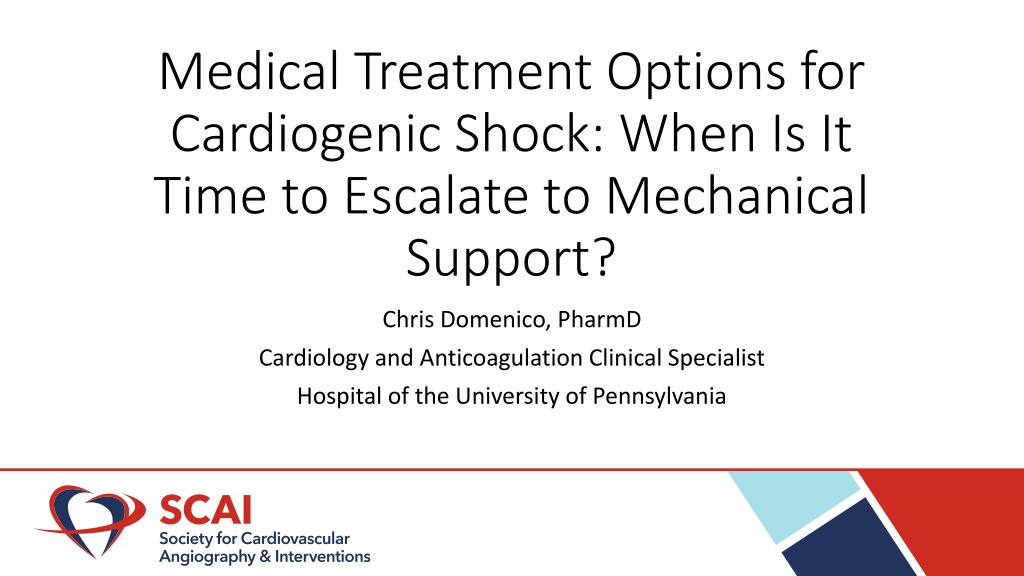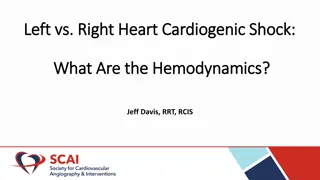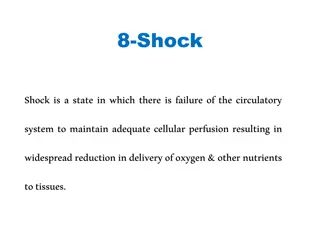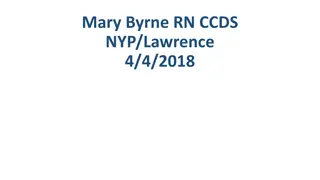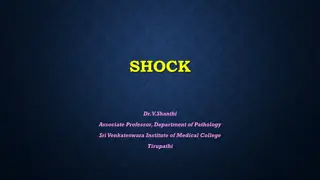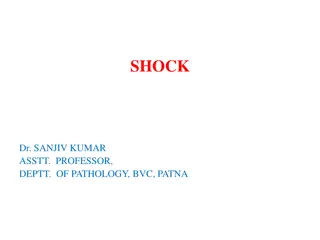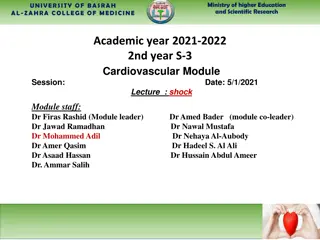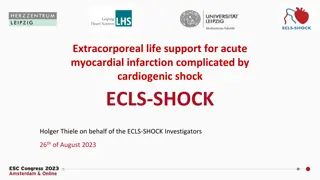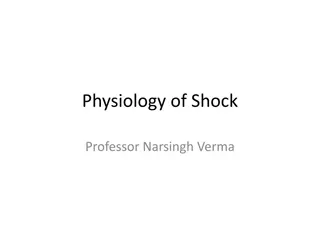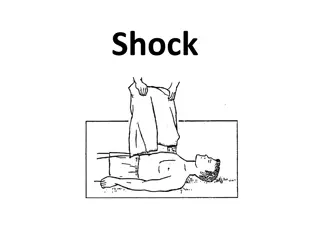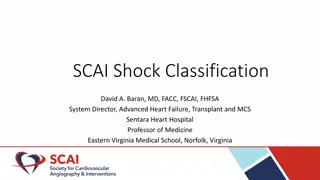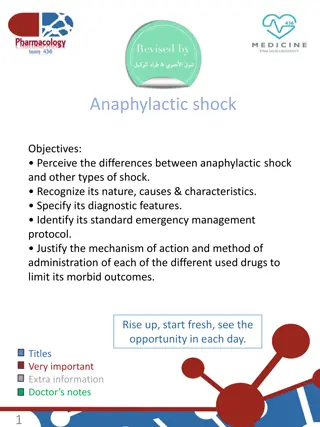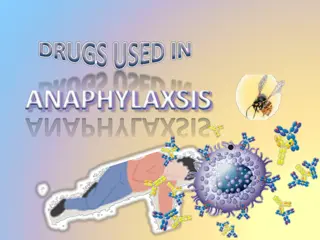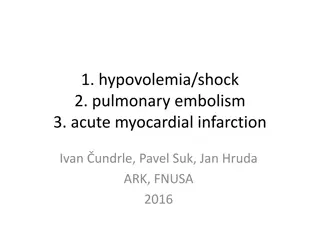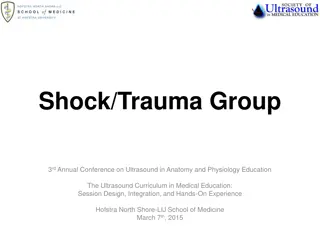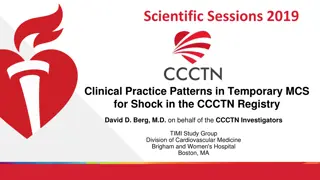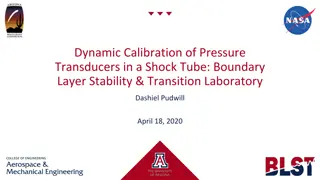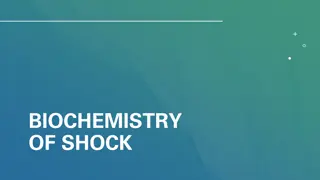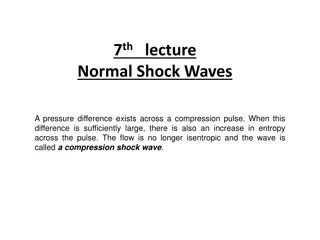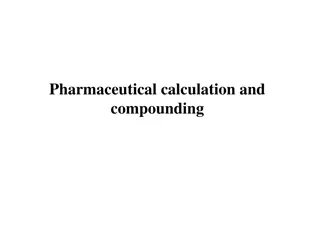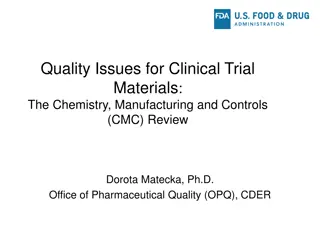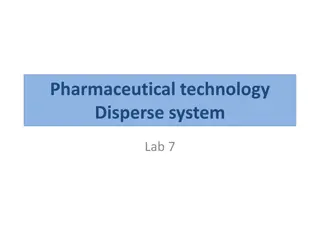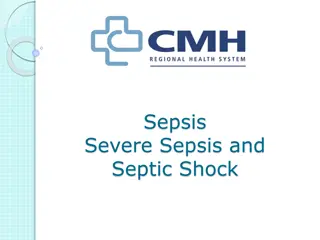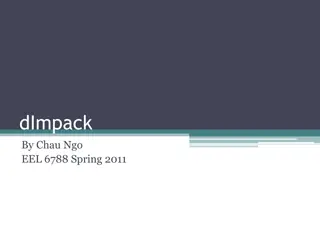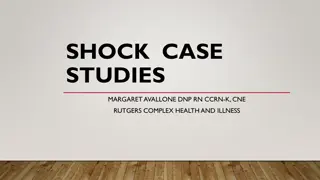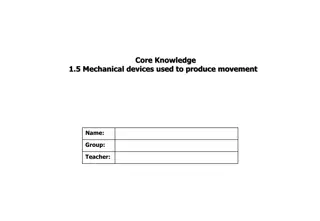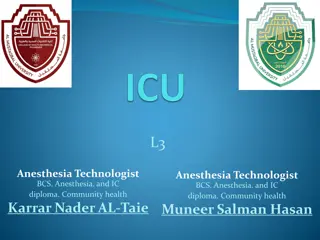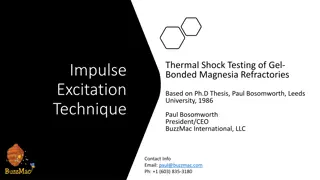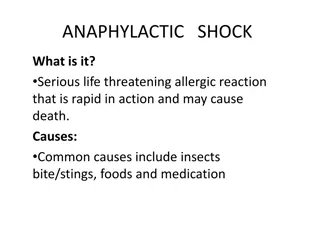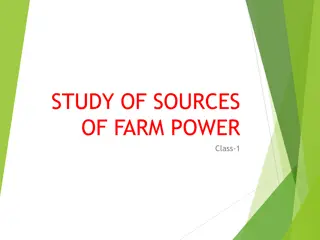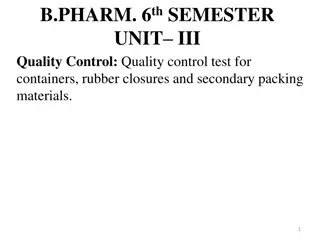Treatment Options for Cardiogenic Shock: Pharmaceutical and Mechanical Support
This article discusses pharmaceutical treatment options for cardiogenic shock, including milrinone, dobutamine, and dopamine. It also explores criteria for escalating treatment to mechanical support in cases of severe shock. The comparison between milrinone and dobutamine in supporting patients awaiting heart transplant is presented, showing no significant difference in outcomes. Overall, this informative piece highlights essential considerations in managing cardiogenic shock effectively.
Download Presentation

Please find below an Image/Link to download the presentation.
The content on the website is provided AS IS for your information and personal use only. It may not be sold, licensed, or shared on other websites without obtaining consent from the author. Download presentation by click this link. If you encounter any issues during the download, it is possible that the publisher has removed the file from their server.
E N D
Presentation Transcript
Medical Treatment Options for Cardiogenic Shock: When Is It Time to Escalate to Mechanical Support? Chris Domenico, PharmD Cardiology and Anticoagulation Clinical Specialist Hospital of the University of Pennsylvania
Disclosures Pfizer: consultant fees
Objectives Describe the pharamaceutical options for treating cardiogenic shock Identify criterion that will escalate the treatment of cardiogenic shock from medical to mechanical support
Milrinone Inotrope (Inodilator) Mechanism of action Inhibits PDE3in cardiac and vascular muscle cAMP intracellular Ca2+ contractile force in cardiac muscle contractile protein phosphorylation relaxation in vascular muscle Effects: CO, HR, SVR, PVR Dosing: 0.125 mcg/kg/min 0.75 mcg/kg/min Onset of action: 5-15 minutes Half life: 2-3 hours (up to 12 hours in patients with renal dysfunction) Excretion: Urine (83% as unchanged drug) Adverse effects: hypotension, arrhythmias, thrombocytopenia, LFTs, hypokalemia Milrinone [package insert].
Dobutamine Inotrope Mechanism of action eta agonist cAMP activation of protein kinases (PKA) phiosporylation activation of calcium channels calcium contractility 1 > > > 2 agonist Effects: CO, HR, / SVR, PVR Dosing: 2.5-20 mcg/kg/min Onset of action: 1-10 minutes Half-life: 2 minutes Metabolism: methylation and conjugation in liver and tissues Adverse events: arrhythmias, tachycardia, phlebitis Dobutamine [package insert].
Milrinone vs Dobutamine Objective To determine optimal inotropic support in patients awaiting heart transplant Design Prospective, randomized, single center Methods 36 patients randomized to milrinone 0.25-0.75 g/kg/min or dobutamine 2.5-10 g/kg/min Endpoints Primary: hemodynamic decompensation, ventricular arrhythmias, need for additional vasodilator or inotropic support Secondary: death, need for MCS, heart transplant, need for crossover inotrope Results No difference in any primary or secondary outcomes Conclusion Both dobutamine and milrinone can be successfully used to bridge patients to transplant Aranda JM. Am Heart J. 2003;145:324-329.
Dopamine Inotrope/Vasopressor Mechanism of action: Dopmaine, Beta, and Alpha agonist cAMP activation of protein kinases (PKA) phosporylation activation of calcium channels calcium contractility Effects: CO, HR, / SVR, PVR Dosing: 1-20 mcg/kg/min Onset of action: 5 minutes Half life: 2 minutes Metabolism: hepatic and plasma by monoamine oxidase Adverse events: arrhythmias, tachycardia Dopamine [package insert].
Norepinephrine Vasopressor Mechanism of action: Beta and alpha agonist cAMP activation of protein kinases (PKA) phosporylation activation of calcium channels calcium contractility 1 > 1 > 2 Effects: CO, / HR, SVR, / PVR Dosing: 1-60 mcg/min (0.01-0.4 mcg/kg/min) Onsite of action: 1 minute Half life: 1-2 minutes Metabolism: hepatic via catechol-o-methyltransferase (COMT) and monoamine oxidase (MAO) Adverse Events: hypertension, peripheral ischemia Norephinephrine [package insert].
SOAP II To evaluate the choice of norepinephrine (NE) or dopamine (DA) as the first line agent for patients with shock Objective Multicenter, prospective, randomized, controlled trial Design 1679 patients randomized to NE or DA Methods Primary: rate of death at 28 days Secondary: number of days without need for organ support; occurrence of adverse events Endpoints No difference in death at 28 days (52.5% DA vs. 48.5% NE, P=0.10) In patients with cardiogenic shock, increased risk of death at 28 days with DA (P=0.03) More arrhythmias in DA group (24.1% vs. 12.4%, P<0.001) Results Norepinephrine should be used over dopamine as a first-line agent in shock Conclusion De Backer D. N Engl J Med. 2010;362:779-789.
Epinephrine Inotrope/Pressor Mechanism of action: Beta and Alpha agonist cAMP activation of protein kinases (PKA) phosporylation activation of calcium channels calcium contractility 1 1 > 2 Effects: CO, HR, SVR, PVR Dosing: 1-20 mcg/min (0.01-0.5 mcg/kg/min) Onset of action: 5-10 minutes Half-life: < 5 minutes Metabolism: hepatic and other tissues Adverse events: arrhythmias, tachycardia, hypertension Epinephrine [package insert].
EPI vs NE in MI To compare the efficacy and safety of Epinerphrine and Norepinephrine in patients with CS after acute MI Objective Prospective, double-blind, multicenter, randomized controlled trial Design 57 patients randomized to NE or EPI to target a MAP of 65-70 mmHg Methods Primary efficacy: change in cardiac index (CI) Primary safety: incidence of refractory CS Secondary: hemodynamic parameters, cardiac power index, use of inotropes, lactate, SOFA score at 72 hours, arrhythmias No difference in CI (p = 0.43) at 72 hours Higher incidence of refractory shock in EPI group (37% vs 7%; p = 0.008) NE showed better HR, cardiac double product, and lactic acidosis No difference in arrhythmias Endpoints Results Conclusion The use of EPI compared with NE was associated with similar effects on arterial pressure and CI and a higher incidence of refractory shock Levy B. J AM Coll Cardiol. 2018;72:173-182.
Vasopressin Vasopressor Mechanism of action: V1 and V2 agonist Stimulation of V1 on smooth muscle vasoconstriction V1 > V2 Effects: / CO, HR, SVR, Dosing: 0.01-0.07 units/minute Onset of action: within 15 minutes Half life: 10-20 minutes Metabolism: hepatic Adverse events: hyponatremia, mesenteric ischemia, hypertension PVR Vasopressin [package insert].
Nitroprusside Vasodilator Mechanism of action: NO guanylyl cyclase activation deposphorylation of myosin light chains Arteries >> Veins Effects: CO, / HR, SVR, CVP, PCWP, PVR Dosing: 10-400 mcg/min (0.10-10 mcg/kg/min) Onset of action: 1 minute Half life: 2 minutes Nitroprusside [package insert].
Nitroprusside Adverse effects: HA, N/V, flushing, methemoglobinemia, arrhythmias, neurologic, platelet aggregation; Cyanide: metabolic acidosis, decreased oxygen saturation, bradycardia, confusion, convulsions; Thiocyanate: fatigue, tinnitus, N/V, hyperreflexia, confusion, psychosis, myosis
Nitroprusside For Advanced Low-Output HF To examine the safety and efficacy of nitroprusside in ADHF Objective Nonrandomized, Retrospective, Case-Control Series Design Primary: all-cause mortality, cardiac transplant, and HF readmission Endpoints Nitroprusside decreased all-cause mortality (OR: 0.48; p = 0.005; 95% CI: 0.29 to 0.80) No difference in cardiac transplant or rehospitlizations Trend toward less home inotropes in nitroprusside group Multivariate analysis Nitroprusside associated with decreased mortality (HR 0.54, 95% CI 0.33-0.88, P=0.015) Inotropes associated with increased mortality (HR 2, 95% CI 1.36-3.6, P=0.01) Results In patients with advanced low-output HF, vasodilator therapy in conjunction with optimal medical therapy is associated with favorable long-term outcomes Conclusion Mullens W. JACC. 2008;52(3):200-207.
Comparison Table Inotrope Infusion (mcg/kg/min) t1/2 CO HR SVR PVR Dopamine 5-10 2-3 min 10-20 Dobutamine 2.5-5 2 min 7.5-20 Milrinone 0.125-0.75 2-3 hours* Epinephrine 0.01-0.5 < 5 min Norepinephrine 0.01-0.4 1-2 min Vasopressin 0.01-0.07 units/min 10-20 min
Criteria to Escalate to MCS Low output despite maximum tolerated inotropic/vasodilatory support Hypotension Arrythmias Side effect/contraindication to ongoing medical therapy
Conclusion Inotropes, Pressors, and Vasodilators can be used effectively to manage CS Current hemodynamics and underlying etiology should drive choice of agent Some patients may progress to needing MCS
Medical Treatment Options for Cardiogenic Shock: When Is It Time to Escalate to Mechanical Support? Chris Domenico, PharmD Cardiology and Anticoagulation Clinical Specialist Hospital of the University of Pennsylvania
